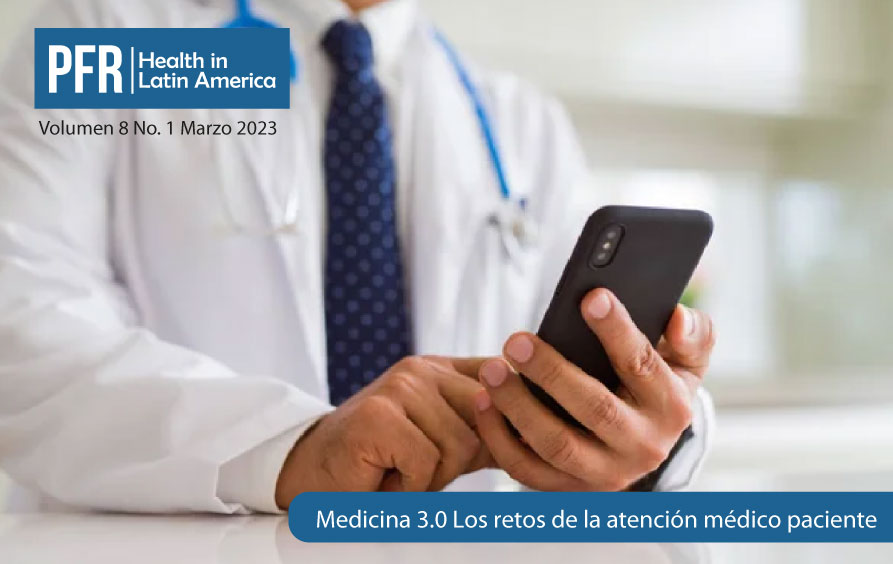Update on the treatment of Peyronie's disease. Literature Review
DOI:
https://doi.org/10.16921/pfr.v8i1.263Keywords:
Peyronie's disease, corpora cavernosa, fibrotic lesionAbstract
Introduction: Peyronie's disease is a progressive and localized fibrotic disorder that affects the tunica albuginea. Generally, men will present with a new curvature of the penis, which may be associated with pain in the acute phase. This pathology can also be frequently associated with erectile dysfunction, shortening of the penis, psychological distress and a palpable plaque, which is usually found on the dorsal aspect of the shaft of the penis evidenced on physical examination by the doctor. The prevalence is estimated to be 0.4 to 20%, with manifestation typically in the fifth decade of life. The underlying pathogenesis of Peyronie's disease is unknown but is likely to be multifactorial with an interplay between genetic predisposition, trauma, and tissue ischemia.
Within systemic management, the American Urological Association (AUA) does not recommend any oral pharmacotherapy due to the lack of solid evidence. In contrast, the European Association of Urology (EAU) suggests that potassium paraaminobenzoate may result in a significant reduction in curvature, plaque size, and pain. The use of antioxidant therapy with vitamin E is investigated, as well as the use of phosphodiesterase-5 inhibitors and tamoxifen.
Objective: Collect truthful information with a current approach to treatments for Peyronie's disease.
Materials and Methods: The development of the article will be based on a systematic review using scientific journals from the PubMed database, UpToDate, Springer, Nature, British Medical Journal (BMJ), Frontiers in Reproductive Health and other scientific journals with updated information as of 2018, which have been found in English and Spanish. For the search, the following terms were used: "Peyronie's disease", "complications", "treatment", "risks", "urinary tract".
Results: A bibliographic review article was prepared with updated and highly interesting information in relation to the proposed topic.
Conclusion: Peyronie's disease (PD) is a disease characterized by a curvature of the penile shaft that generally involves an area of plaque or fibrosis and is preceded by very painful erections. PD is considered a disorder of wound healing in the tunica albuginea, resulting in fibrosis and scarring of the tunica albuginea. The exact etiology is not known, but several hypotheses are known. There are several options for its management, oral and systemic injectable therapies used in non-surgical treatment are widely used, however, very few of these therapies are supported by well-designed randomized trials. Intralesion injection of the plaque and surgery are invasive procedures that are also used and have good results.
Downloads
References
2. Bettocchi, C., Santoro, V., Sebastiani, F., Lucarelli, G., Colombo, F., Ralph, D. J., ... & Spilotros, M. (2020). Management of severe complications following penile surgery for erectile dysfunction and Peyronie disease: Three case reports. Medicine, 99(7). Obtenido desde: https://www.ncbi.nlm.nih.gov/pmc/articles/PMC7035019/
3. Cao D, Li J, Lu Y, Huang Y, Chen B, Chen Z, Shen Y, Liu L, Wei Q. Efficacy and Safety of Collagenase Clostridium Histolyticum in the Treatment of Peyronie's Disease: An Evidence-Based Analysis. Frontiers in Medicine. 2022. Obtenido desde: https://www.frontiersin.org/articles/10.3389/fmed.2022.780956
4. Cegla, P., Kubiak, A., Witkowska, K., & Czepczyński, R. (2020). Peyronie Disease as an Example of Nononcological, Inflammatory Uptake of 18F-Fluorocholine in Patient With Prostate Cancer. Clinical Nuclear Medicine, 45(7), 575-576. Obtenido desde: https://europepmc.org/article/med/32433169
5. Cohen, S. D. (2019). Diagnosis and Treatment of Peyronie Disease With Both Dorsal and Ventral Plaques Using Doppler Ultrasound: NYU Case of the Month, July 2019. Reviews in Urology, 21(2-3), 127. Obtenido desde: https://www.ncbi.nlm.nih.gov/pmc/articles/PMC6864913/
6. Chung E, Yafi FA. Pharmacotherapy in Peyronie's disease: a state-of-the-art review on established contemporary and emerging drugs. Expert Opin Pharmacother. 2022. Obtenido desde: https://pubmed.ncbi.nlm.nih.gov/35209789/
7. Da Silva M, Dávila F, Rosito T, Martins F. Global Perspective on the Management of Peyronie's Disease. Frontiers in Reproductive Health. 2022. Obtenido desde: https://www.frontiersin.org/articles/10.3389/frph.2022.863844
8. El-Sakka, AI. Medical, non-invasive, and minimally invasive treatment for Peyronie’s disease: A systematic review. Andrology. 2021; 9: 511– 528 2022. Obtenido desde: https://doi.org/10.1111/andr.12927
9. Gaffney, C. D., & Kashanian, J. A. (2020). Peyronie disease. Jama, 324(24), 2566-2566. Obtenido desde: https://jamanetwork.com/journals/jama/article-abstract/2774409
10. Hatfield, B. S., King, C. R., Udager, A. M., Williamson, S. R., Gandhi, J. S., Amin, M. B., ... & Smith, S. C. (2020). Peyronie disease: a clinicopathologic study of 71 cases with emphasis on histopathologic patterns and prevalent metaplastic ossification. Human pathology, 104, 9-17. Obtenido desde: https://www.sciencedirect.com/science/article/abs/pii/S0046817720301362
11. Kalinina, S. N., Fesenko, V. N., Nikolskii, A. V., & Burlaka, O. O. (2018). Surgical treatment of Peyronie disease. Urology reports (St.-Petersburg), 8(2), 24-29. Obtenido desde: https://journals.eco-vector.com/uroved/article/view/9114
12. Mirza, H., & Rahmadi, R. (2021). Peyronie disease: Our first experience with Ducket Baskin tunica albuginea plication (TAP) technique. International Journal of Surgery Case Reports, 87, 106451. Obtenido desde: https://www.sciencedirect.com/science/article/pii/S2210261221009536
13. Paulis G, De Giorgio G. Complete Plaque Regression in Patients with Peyronie's Disease After Multimodal Treatment with Antioxidants: A Report of 2 Cases. Am J Case Rep. 2022. Obtenido desde: https://www.ncbi.nlm.nih.gov/pmc/articles/PMC9022185/
14. Sandean D, Lotfollahzadeh S. Peyronie Disease. 2021. Obtenido desde: https://www.ncbi.nlm.nih.gov/books/NBK560628/
15. Swislocki, A. L., & Eisenberg, M. L. (2021). Peyronie Disease as a Marker of Inflammation—Is There Hope on the Horizon?. The American Journal of Medicine, 134(10), 1218-1223. Obtenido desde: https://www.sciencedirect.com/science/article/abs/pii/S0002934321004198
16. Trost, L., Huang, H., Han, X. et al. Penile surgery for patients with Peyronie’s disease initially treated with collagenase clostridium histolyticum or surgery: a claims database analysis. Int J Impot Res. 2022. Obtenido desde: https://www.nature.com/articles/s41443-021-00522-8
17. Yousif, A., Natale, C. & Hellstrom, WJG Terapia conservadora para la enfermedad de Peyronie: una revisión contemporánea de la literatura. Curr Urol Rep 22, 6. 2022. Obtenido desde: https://link.springer.com/article/10.1007/s11934-020-01024-8#citeas






